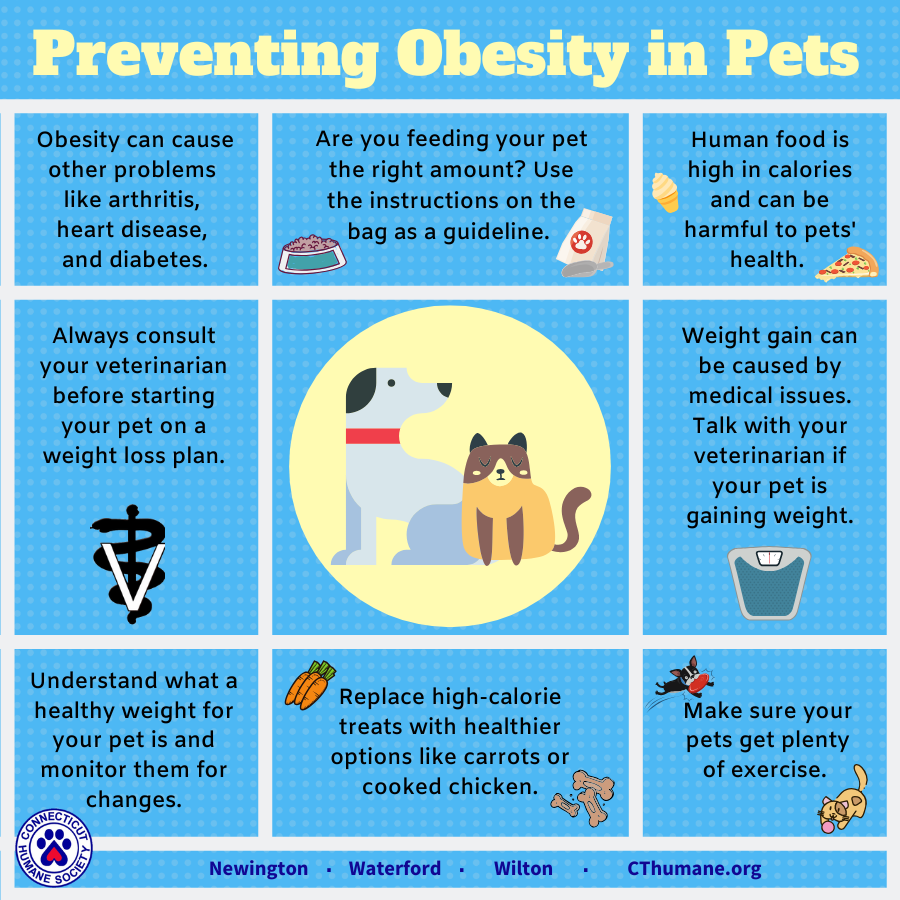
Do you have an overweight or obese pet who needs to slim down? An older pet who has trouble with stairs? Perhaps a diabetic dog or cat who is difficult to regulate on insulin?
Just like humans, pets need regular exercise and a good diet to maintain overall health. Some pets even need a therapeutic diet to get back on track. Many of these diets can help pet parents manage a variety of health issues.
If your pet is overweight there are a few helpful things to keep in mind.
- First, make sure to consult with your veterinarian before beginning any weight loss regimen. Your pet may have a health condition contributing to the weight gain—it’s important to get it diagnosed and treated.
- Even a small decrease in body weight can lower the risk of Diabetes and high blood pressure.
- Exercise helps the respiratory and circulatory systems.
- Exercise strengthens muscles and joints.
- Exercise reduces boredom, anxiety and destructive behaviors.
- Portion control in cats is key—many indoor cats don’t get as much activity as dogs or outdoor cats.
- Provide your cat with a cat tree or condo so they can get exercise by climbing and stretching.
- You can gradually reduce your cat’s food intake by up to 20%.
- There are many canned cat foods high in fish oils, low in fat and calories, and high in fiber content. The increased water content can benefit kidney and bladder function.
- Dogs who are picky eaters or resistant to low-calorie diets should have their overall food intake decreased by 20-40%. Feed smaller meals more often.
- Some dog foods contain glucosamine and chondroitin for joint health.
- When changing foods, transition over several days to avoid gastrointestinal problems.
While there are many “weight loss” diets available at your pet store, there are veterinary prescription diets available that provide balanced nutrition to meet a variety of special needs as well as weight control. (All prescription diets require a prescription from a veterinarian.)
Dental Care in our pets:
By the age of 7, most cats and dogs have developed some degree of dental disease. Beginning daily brushing as a puppy or kitten can greatly reduce the amount of dental calculus that would normally form on your pets teeth. Starting a tooth brushing regimen at a young age will also make your pet more comfortable with touching in their mouths. “Brushing” doesn’t always have to be done with a toothbrush – gently rubbing the outer surfaces of your pet’s teeth with a baby washcloth is just as effective and your pet may even prefer it! Make sure to only use a tooth paste made specifically for dogs and cats – these usually come in great meat flavors your pet will enjoy. Never brush your pet’s teeth with a human tooth paste.
There are also veterinary diets available to aid in the health of your pet’s teeth. Hill’s Science Diet makes a prescription diet called t/d. This diet is made with large, porous kibble which is intended to clean the tooth surface while your pet chews. This food also has reduced levels of calcium and protein to limit the production of tartar. When fed at the onset of dental disease, this diet is clinically proven to reduce the development of tartar, bad breath and gum disease.
There are many veterinary prescription diets available to assist in the management of and prevention of health problems. Talk with your veterinarian about which therapeutic diet might be best for your pet.
